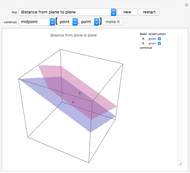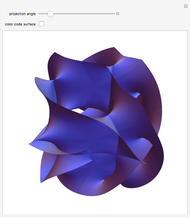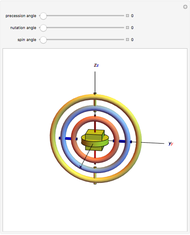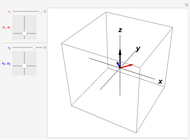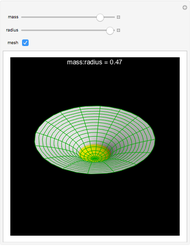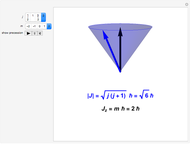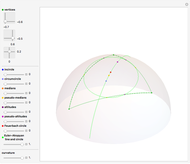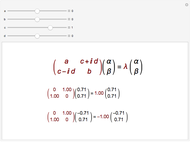Euler Angles for Space Shuttle

Requires a Wolfram Notebook System
Interact on desktop, mobile and cloud with the free Wolfram Player or other Wolfram Language products.
The Euler (or Eulerian) angles, usually designated  ,
,  , and
, and  , uniquely determine the orientation of a rigid body in three-dimensional space. There are several conflicting conventions for defining the Euler angles, depending on the choice of axes and the order in which rotations about these axes are performed. This Demonstration uses the convention described in MathWorld, hyperlinked below in Related Links. This is most commonly used in physics and is known as the "
, uniquely determine the orientation of a rigid body in three-dimensional space. There are several conflicting conventions for defining the Euler angles, depending on the choice of axes and the order in which rotations about these axes are performed. This Demonstration uses the convention described in MathWorld, hyperlinked below in Related Links. This is most commonly used in physics and is known as the " convention." For topical relevance, NASA's space shuttle is chosen as the rigid body. The angles
convention." For topical relevance, NASA's space shuttle is chosen as the rigid body. The angles  and
and  are analogous to the spherical polar coordinates orienting the main axis of the shuttle, while
are analogous to the spherical polar coordinates orienting the main axis of the shuttle, while  describes rotation about this axis. The ranges of the three Euler angles are given by:
describes rotation about this axis. The ranges of the three Euler angles are given by:  ,
,  , and
, and  . The corresponding motions of a rigid body are termed nutation, precession and intrinsic rotation.
. The corresponding motions of a rigid body are termed nutation, precession and intrinsic rotation.
Contributed by: S. M. Blinder (March 2011)
With a correction by Joeri Gerlo, University of Ghent
Open content licensed under CC BY-NC-SA
Snapshots
Details
Permanent Citation




















